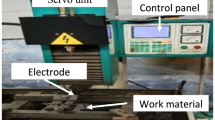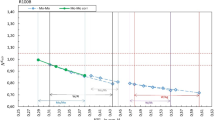Abstract
IN reply to Mr. Walter Chamberlain's inquiry (p, 198), it must be borne in mind that spark length is not per se a criterion of the energy delivered to a vacuum tube. The length of spark is more or less proportionate to the maximum E.M.F. of the discharge, while the energy of a discharge depends upon the nature of the curves of both E.M.F. and current, and may bear but a small relation to the maximum E.M.F. Large coils which have secondary wire of considerable section and comparatively large electrostatic capacity, give a much greater electric quantity and, consequently, much more energy for each discharge, even when worked so as to give only short of arks, than do smaller coils the secondary wire of which is of smaller section and capacity.
This is a preview of subscription content, access via your institution
Access options
Subscribe to this journal
Receive 51 print issues and online access
$199.00 per year
only $3.90 per issue
Buy this article
- Purchase on SpringerLink
- Instant access to full article PDF
Prices may be subject to local taxes which are calculated during checkout
Similar content being viewed by others
Author information
Authors and Affiliations
Rights and permissions
About this article
Cite this article
SWINTON, A. The Heating of Anodes in X-Ray Tubes. Nature 55, 225 (1897). https://doi.org/10.1038/055225a0
Issue date:
DOI: https://doi.org/10.1038/055225a0



